1. Digital Fabric Printing
Advanced printing technologies have revolutionized fabric design, allowing for intricate patterns and vibrant colors to be applied to textiles more efficiently and with less waste. This has opened up new possibilities for customization and on-demand production in fashion.
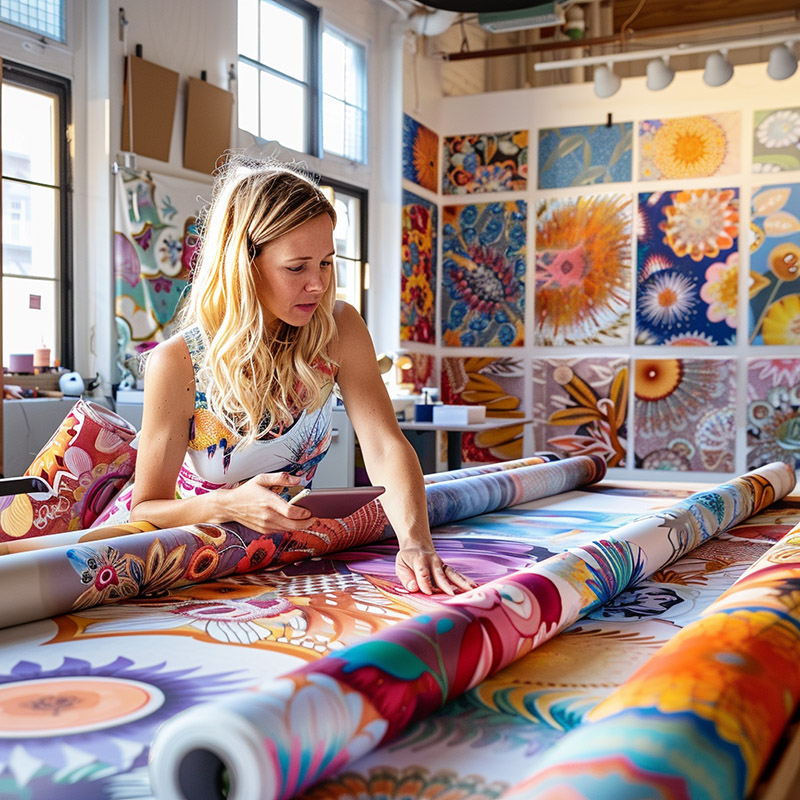
Digital fabric printing has revolutionized the textile industry by enabling designers to create complex and colorful patterns with high precision and minimal waste. This technology allows for short production runs and on-demand manufacturing, reducing excess inventory and the environmental impact associated with traditional dyeing and printing methods. It opens up new possibilities for customization, allowing consumers to have a more personal connection to their garments. Digital printing's efficiency and versatility support the growing demand for sustainable and unique fashion, significantly impacting how textiles are produced and consumed.
2. Wearable Technology
The integration of technology into clothing and accessories has led to the development of smart garments that can monitor health metrics, change color, and even charge devices, merging fashion with functionality and innovation.
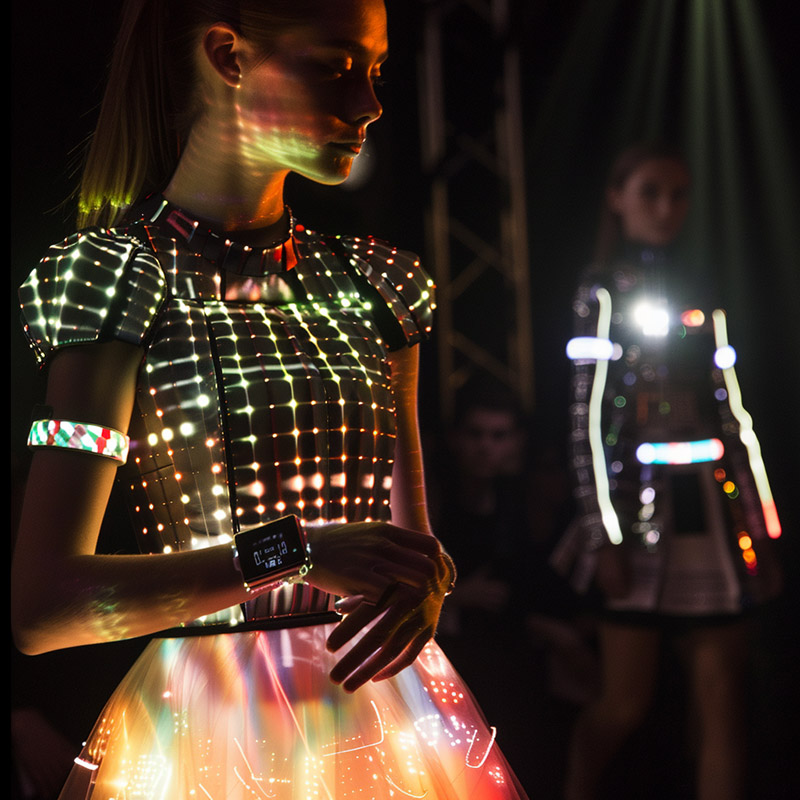
Wearable technology merges fashion with functionality, transforming how we interact with our clothes and accessories. Smart garments enhance everyday life, from monitoring health metrics to adjusting to environmental conditions, providing both aesthetic appeal and practical benefits. This convergence of technology and fashion not only pushes the boundaries of what clothing can do but also introduces new challenges and opportunities in design, manufacturing, and consumer expectations. As wearable technology becomes more integrated into the fabric of our lives, it has the potential to significantly improve personal well-being, athletic performance, and even how we connect with digital worlds.
3. 3D Printing
3D printing technology has enabled designers to create complex, customizable garments and accessories with reduced material waste. This method has been used for everything from haute couture to footwear, pushing the boundaries of traditional fashion manufacturing.
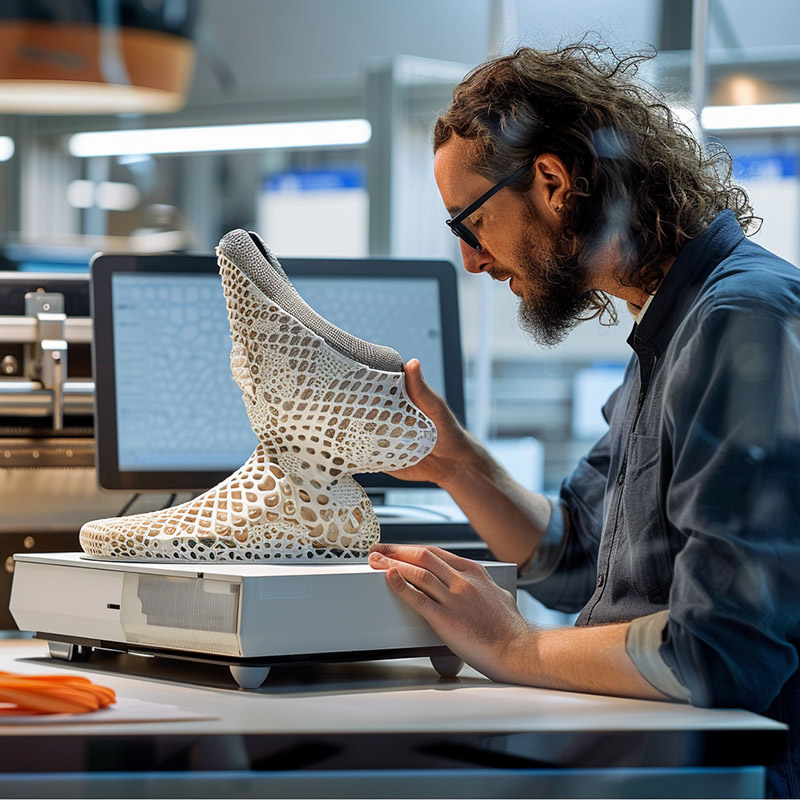
3D printing in fashion introduces a new realm of possibilities for customization, sustainability, and innovation. By allowing designers to create intricate designs that would be impossible or prohibitively expensive with traditional manufacturing methods, 3D printing is pushing the boundaries of fashion design. This technology reduces waste by using only the material needed for each item, supporting the industry's shift toward more sustainable practices. As 3D printing becomes more accessible, it could democratize fashion design, enabling small designers and consumers to create bespoke pieces, ultimately changing the dynamics of fashion production and consumption.
4. Sustainable Production Methods
Technological advancements have led to more sustainable fabric production methods, including the use of recycled materials and waterless dyeing techniques. These innovations help reduce the fashion industry's environmental impact.
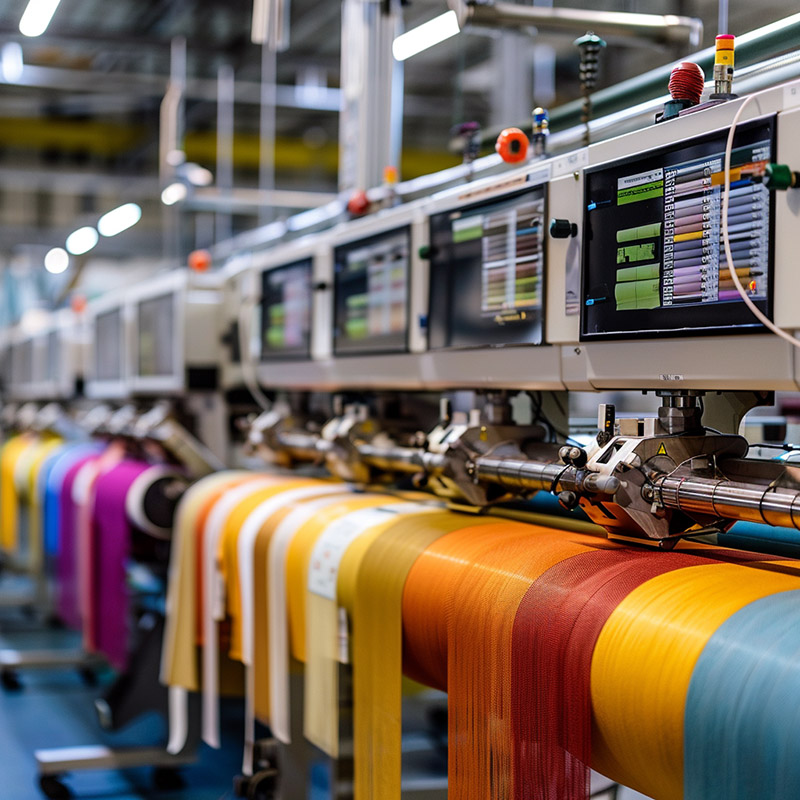
The adoption of sustainable production methods in the fashion industry addresses critical environmental issues such as water usage, chemical pollution, and waste. By utilizing recycled materials, waterless dyeing techniques, and other eco-friendly practices, fashion brands can significantly reduce their ecological footprint. This shift not only helps preserve natural resources but also meets the growing consumer demand for ethical and sustainable fashion. As sustainability becomes a more pressing concern, these innovative production methods are set to play a pivotal role in reshaping the fashion industry's impact on the planet.
5. E-Textiles
Electronic textiles (e-textiles) incorporate conductive threads and fabrics that allow for the integration of electronic components and systems into textiles, enabling garments to light up, heat up, or even display digital messages.
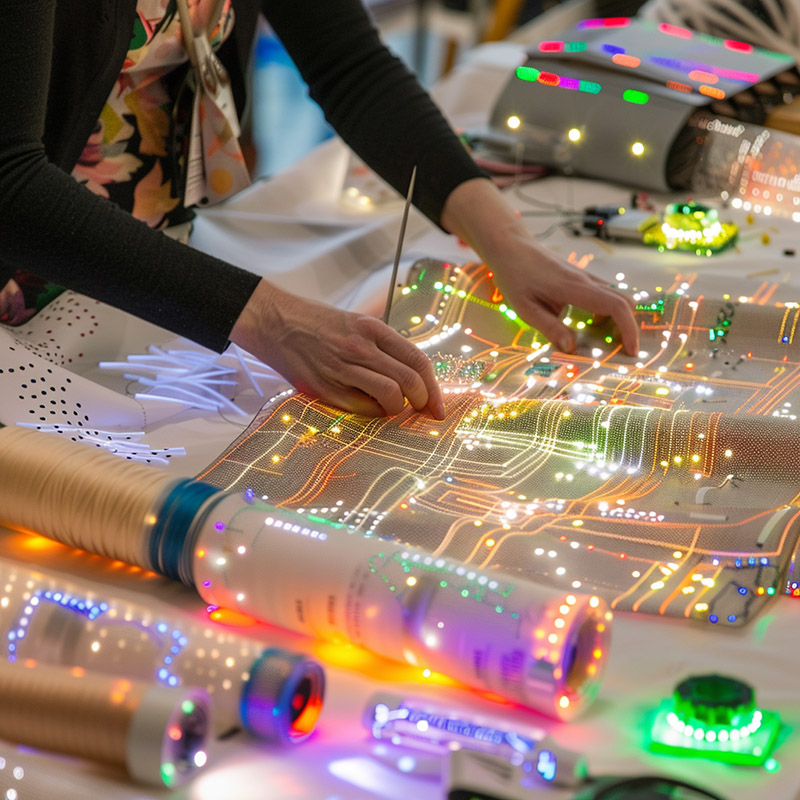
E-textiles represent a significant advancement in the integration of electronics and fabrics, opening up new applications for clothing and wearable devices. From health monitoring to dynamic aesthetic changes, e-textiles enhance the functionality of garments, making them interactive and responsive. This technology has the potential to transform how we use clothing, turning garments into devices that can collect data, communicate, and even provide sensory feedback. As e-textiles evolve, they could revolutionize not only fashion but also health care, sports, and entertainment, blurring the lines between technology and textiles.
6. AI in Fashion Design
Artificial intelligence is being used to analyze trends and customer preferences, predict future fashion trends, and even generate unique clothing designs, streamlining the design process and creating more personalized shopping experiences.
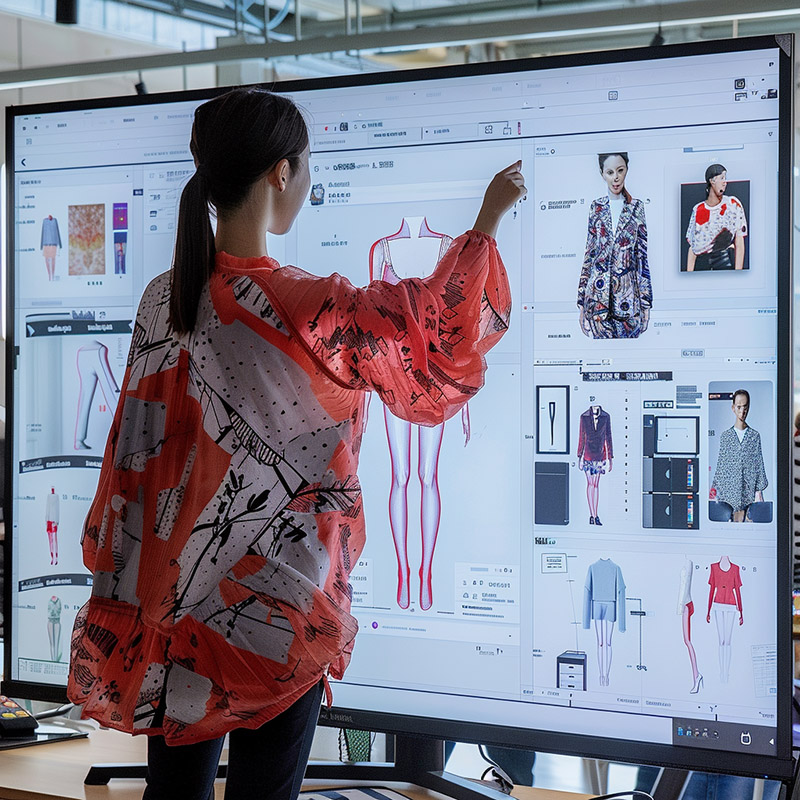
Artificial intelligence is significantly impacting fashion design by analyzing trends, optimizing supply chains, and even generating original designs. AI's predictive capabilities enable brands to anticipate and react to changing consumer preferences with unprecedented speed, reducing waste and improving market responsiveness. Moreover, AI-generated designs push creative boundaries, challenging traditional notions of creativity and style. As AI continues to evolve, its role in fashion design promises to further personalize the shopping experience, streamline production processes, and introduce new levels of innovation in the industry.
7. Augmented Reality (AR) and Virtual Reality (VR)
AR and VR technologies are transforming the shopping experience, allowing customers to try on clothes virtually, experience fashion shows in 360 degrees, or see how furniture and decor items would look in their homes before making a purchase.
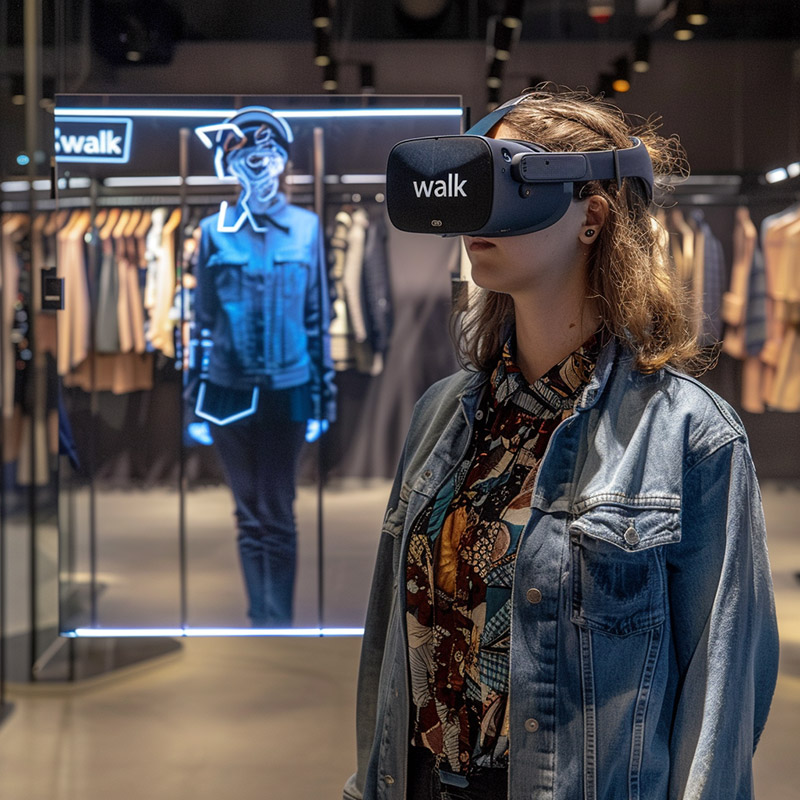
AR and VR technologies are transforming the fashion industry by enhancing how consumers discover, try, and buy products. Virtual fitting rooms and immersive fashion shows offer engaging shopping experiences from the comfort of home, reducing returns and bringing the tactile experience of retail into the digital realm. These technologies not only revolutionize retail but also open up new avenues for brand storytelling and customer engagement, offering a glimpse into the future of fashion where digital and physical experiences seamlessly converge.
8. Blockchain for Authenticity and Transparency
Blockchain technology is being used to create transparent supply chains, enabling consumers to trace the origin of garments and verify their authenticity. This is particularly relevant for luxury brands and sustainability-focused labels.

Blockchain technology brings a new level of authenticity and transparency to the fashion industry. By providing a tamper-proof record of a garment's journey from raw material to final product, blockchain helps combat counterfeiting and ensures ethical sourcing practices. Consumers can verify the authenticity of luxury items and the sustainability credentials of their clothing, empowering them to make informed purchasing decisions. As transparency becomes increasingly important to shoppers, blockchain stands to significantly improve trust and accountability in the fashion supply chain.
9. Online Retail and Social Media Marketing
The rise of e-commerce and social media platforms has dramatically changed how fashion is marketed and sold, making it easier for brands to reach global audiences and for consumers to access a wider variety of styles and products.
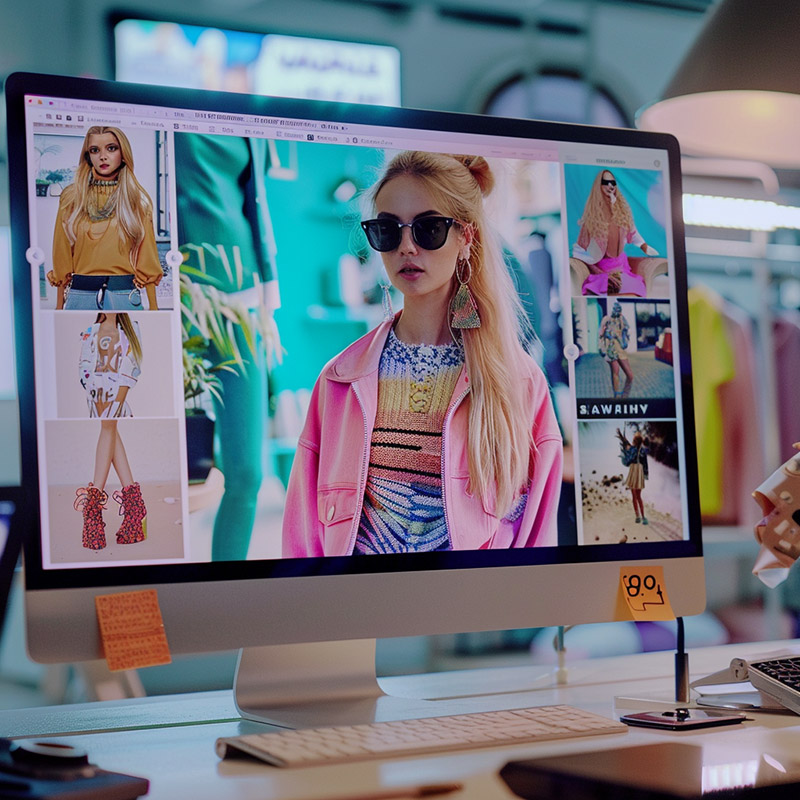
The rise of online retail and social media marketing has dramatically changed how fashion is marketed and sold, enabling brands to reach a global audience with ease. Social media platforms have become virtual runways, where trends are set and discovered, and e-commerce has made fashion more accessible, allowing anyone with internet access to shop the latest styles. This digital transformation has democratized fashion, but it also challenges brands to maintain engagement and authenticity in a crowded online marketplace, highlighting the importance of innovative and genuine marketing strategies.
10. Fashion Apps and Platforms
Fashion Apps and Platforms
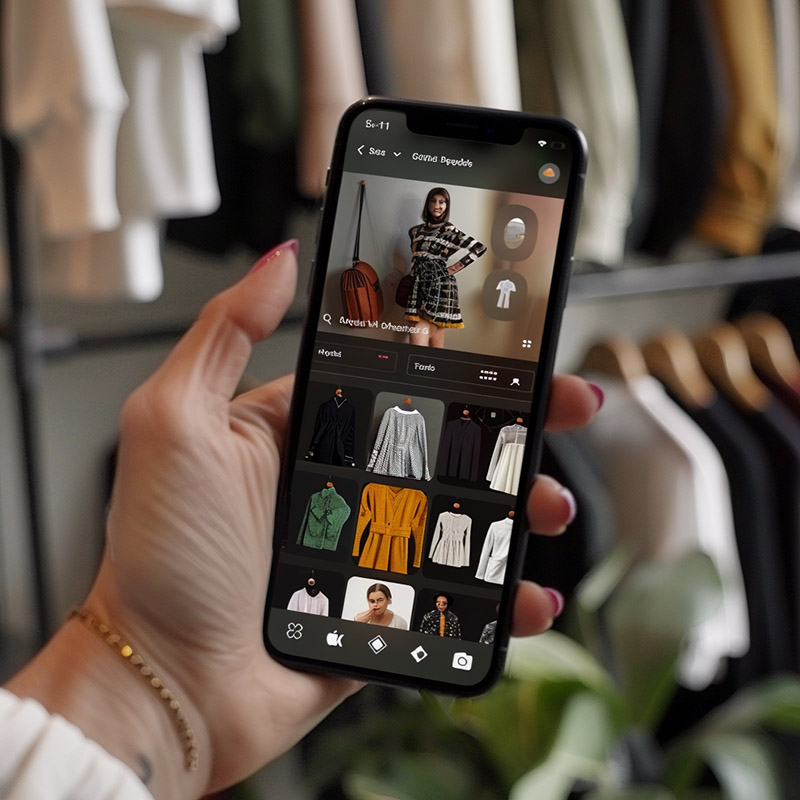
Fashion apps and platforms have made fashion more accessible and sustainable, offering services from virtual wardrobes and styling advice to platforms for buying and selling second-hand clothing. These digital tools empower consumers to make more informed and sustainable fashion choices, promoting a circular fashion economy and reducing waste. As technology continues to evolve, these platforms will likely play an increasingly important role in shaping consumer habits, encouraging a more conscious and personalized approach to fashion.